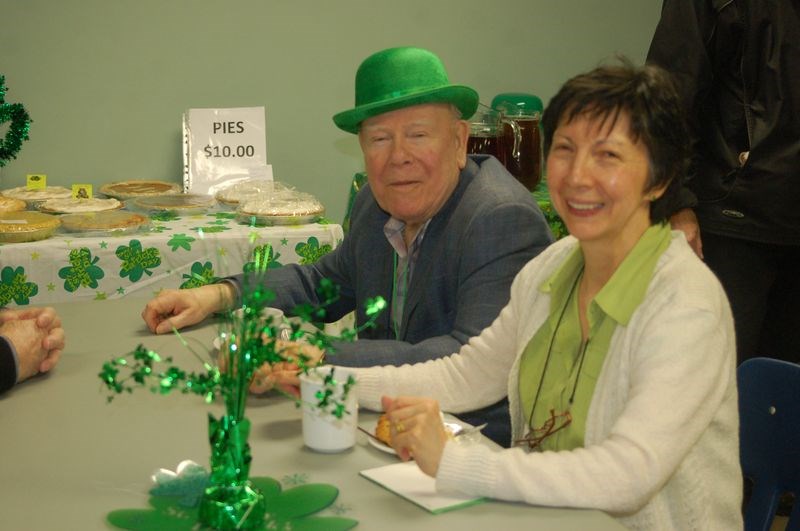The St.Partick's Roman Catholic Church in Sturgis carried on the tradition of celebrating St. Patrick's day with a pie social and a fun card party on March 12. Individuals enjoyed eating an assortment of pies and participated in a good natured card game.
Saint Patrick's Day, or the Feast of Saint Patrick is a cultural and religious celebration held on March 17, the traditional death date of Saint Patrick (c. AD 385–461), the foremost patron saint of Ireland.
Saint Patrick's Day was made an official Christian feast day in the early 17th century and is observed by the Catholic Church, the Anglican Communion (especially the Church of Ireland), the Eastern Orthodox Church, and Lutheran Church. The day commemorates Saint Patrick and the arrival of Christianity in Ireland, and celebrates the heritage and culture of the Irish in general. On St. Patrick's Day it is customary to wear shamrocks and/or green clothing. St. Patrick is said to have used the shamrock, a three-leaved plant, to explain the Holy Trinity to the pagan Irish. This story first appears in writing in 1726, though it may be older. In pagan Ireland, three was a significant number and the Irish had many triple deities, a fact that may have aided St. Patrick in his evangelisation efforts. Patricia Monaghan says there is no evidence that the shamrock was sacred to the pagan Irish.
The colour green has been associated with Ireland since at least the 1640s, when the green harp flag was used by the Irish Catholic Confederation. Green ribbons and shamrocks have been worn on St Patrick's Day since at least the 1680s. The Friendly Brothers of St Patrick, an Irish fraternity founded in about 1750, adopted green as its colour. The phrase "wearing of the green" comes from a song of the same name, which laments United Irishmen supporters being persecuted for wearing green. Throughout the 19th and 20th centuries, the colour green and its association with St. Patrick's Day grew.
The wearing of the St. Patrick's Day Cross was also a popular custom in Ireland until the early 20th century.




